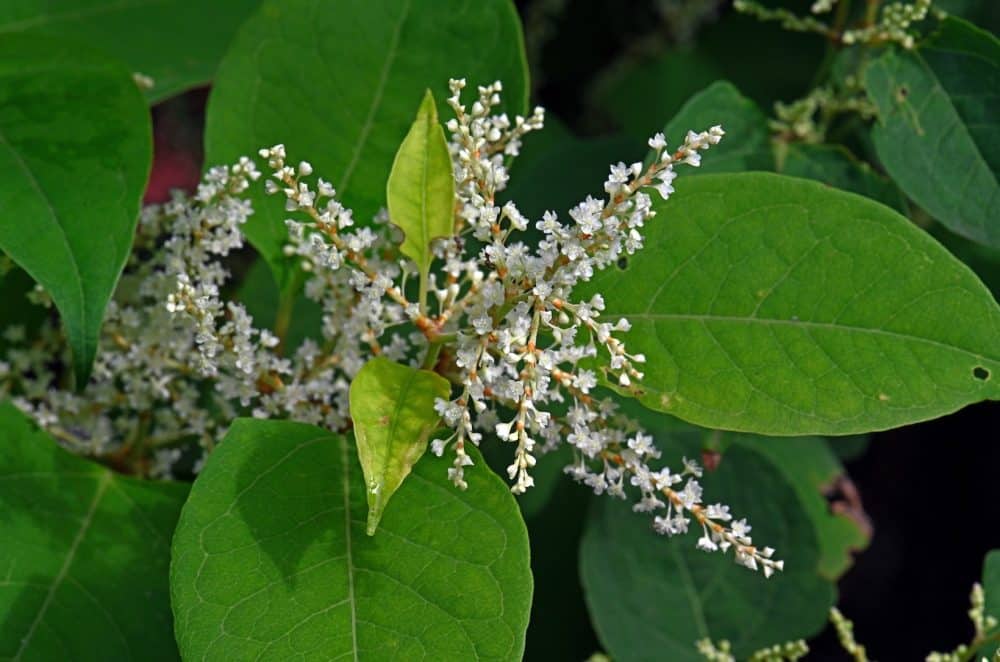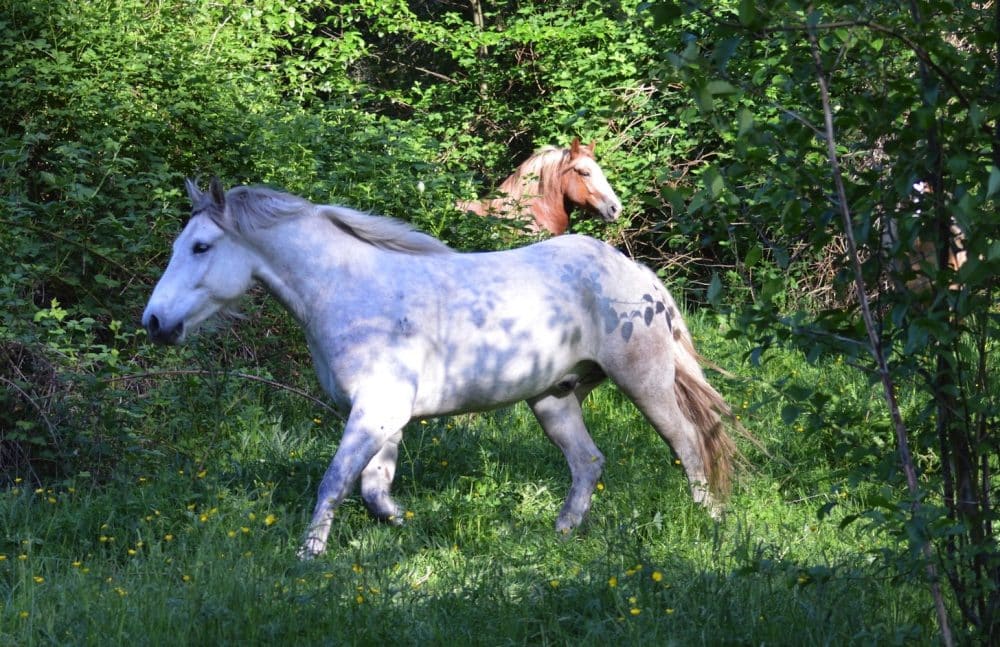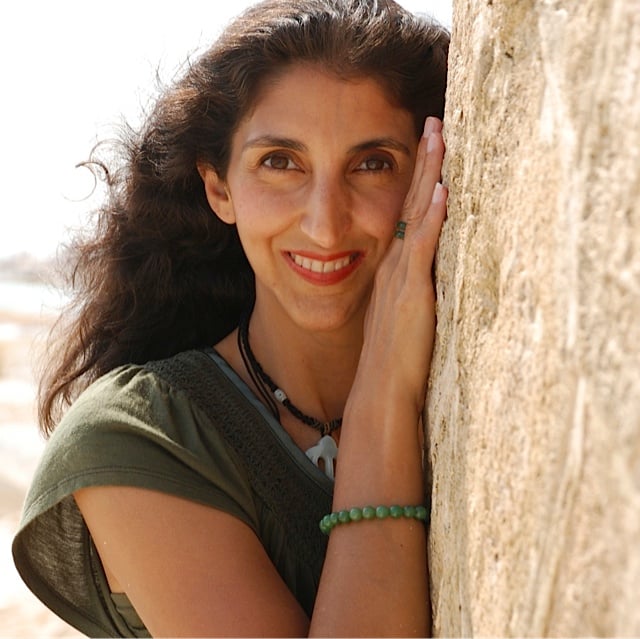Lyme Disease is as difficult to treat/heal in horses as it is in humans. Most veterinarians will treat Lyme with antibiotics, often intravenously as well as orally.
I received this call for help from one of our horse listeners:
“I have a horse with chronic lyme who has been treated traditionally for a year and a half. Her numbers and symptoms persist.
I use oil of oregano for myself and my family for infections and I want to give it to my mare. I need your expertise on dosage and administration. Please help she is only 6 years old!”
In case you find yourself in a similar situation, here is the information I shared with this reader:
Yes, you can offer wild oregano free choice – just hold the dropper out to your horse and if she wants it (body wisdom) you can then squirt it into her mouth. Audelina took 6 dropperfuls this way once. I’m not sure a horse would consent to the dosage and frequency of wild oregano required to eradicate a stubborn infection though.
So personally, if I had a horse with Lyme disease, I would use Japanese Knotweed instead. Combined with an immune-boosting blend called Respire and a potent probiotic.
Remember if your horse has been on even 1 course of antibiotics, her gut flora is compromised and it’s crucial to implant with beneficial bacteria once a day, usually 2 hours after the last dose of anti-pathogen or antibiotic. If you can give probiotics in the evening, so the bacteria have all night to colonize before you administer the anti-pathogen agents, that is ideal.

Read this overview to get started on exactly what Lyme is and which botanicals can be useful.
Stephen Buhner’s protocol for treating lyme (in humans) is the gold standard, so you may want to get his book. But here are instructions from Buhner for wild-harvesting Japanese Knotwood if you have access to some:
“Collect the root anytime, however it is strongest in spring. It should be cut up and air dried out of the sun.”
Buhner’s recommended dosage for humans taking Japanese Knotweed root powder is to start with 1 tablespoon, 3 times per day and then increase gradually to 3 tablespoons, 3 times per day.

Equine Dosage for Japanese Knotweed Lyme Treatment
So if we take the average weight of a human at 150 pounds. Then the equivalent dosage for a horse of 1000 pounds would be:
- Start with 1/2 cup Japanese Knotweed powder, 3x/day
- Increase to full dosage of 1.5 cups Japanese Knotweed powder, 3x/day
However, this is where I would also listen to your horse’s body wisdom. In my experience, horses usually have less resistance/barriers to healing than adult humans – so they heal more quickly and easily. Perhaps your horse doesn’t need 1.5 cups, or only needs it twice per day, and so on.
So I would be really open to listening to my horse’s body wisdom and trusting him to direct his own treatment and dosing.
Listening to the Horse’s Body Wisdom
I’ll tell you a story that illustrates what this can look like:
Jax asked me to call the vet after getting punctured in his armpit. We never did discover what punctured him, but it could even have been a pointy stick as the wound was about half and inch wide and about 4 inches deep.
So the vet come out and thoroughly flushed the wound with iodine, then explored with his fingers just to ensure there was no debris or object left in the cavity. Afterwards, he left instructions for antibiotics and a diuretic. He explained that the diuretic was super important as without proper drainage, the wound could easily become infected.
Well Jax only took the antibiotics for 6 days and refused the diuretic entirely. You might be thinking, ‘Well this is why we can’t let animals choose their healthcare, they don’t understand everything like we do.’
Except… the day after the vet left, I noticed Jax eat an entire section of a plant I had never seen any of the horses eat before. So I posted a picture on Facebook asking if anyone knew what this plant was? Turns out it was a powerful natural diuretic!
When he refused the antibiotics, I called my MD brother and asked him to look up the latest data on the efficacy of that antibiotic. Sure enough, they had revised the usage recommendations for that drug and now recommended a much shorter course. The vet was not aware of this information, as it takes quite a while for data to filter down from the research level to practicing doctor level.
But somehow, Jax’s body wisdom knew he no longer needed that antibiotic. As humans we are usually so separated from our body wisdom that we have to undergo some kind of meditative training to be able to connect and hear our bodies clearly again. But animals don’t usually suffer from this separation.

I’ll give you another example, the horses had asked me to get some Neem Leaf for parasite cleansing. So I ordered a large bag of Organic Neem Leaf and when it arrived, I put some in a feed dish and offered it to them.
They tried to eat it, but either wouldn’t take more than a mouthful, or even spat it out. What the heck? “Well now what are we gonna do?” I asked them, “I thought you wanted this?”
Then Audelina told me, “Pour flax oil on it.” This directive was communicated by her sending me a picture of myself pouring flax oil on the neem leaf and stirring it up all together. I went into the tack room and carried out her instructions, checking with her as to how much? When every piece of leaf was well-coated with flax oil, she told me to stop.
I brought the dish back out and she ate the whole thing. Then I went and did the same thing for the other horses, and they each ate a good amount (again, dosage is determined by body wisdom). I scraped the leftovers into one feed dish that I left for them overnight. When I arrived the next day, it too had been eaten. This carried on for numerous days until no one wanted any more. And of course, dosage and frequency varied from horse to horse. Each of them knew how much they needed and how often.
I encourage all of us to give our horses a voice – by listening to them. Your horse knows best what her body needs, and how much, and when, and what else. Just keep listening.
Getting back to Japanese Knotweed and why I would use it if one of my horses had Lyme disease… They’ve even done a clinical trial on Japanese Knotweed (and other botanicals) to determine their efficacy against the specific bacteria involved in Lyme disease:
“…the top two active herbs, Cryptolepis sanguinolenta (shrub that grows in Ghana) and Polygonum cuspidatum (Japanese Knotweed), showed strong activity against both growing B. burgdorferi (MIC = 0.03–0.06% and 0.25–0.5%, respectively) and non-growing stationary phase B. burgdorferi.”
As this article explains further:
“The researchers tested these extracts’ effectiveness in vitro (outside of a living organism) against the free-swimming “planktonic” form of the bacterium as well as against microcolonies. Microcolonies are aggregates of bacteria, the first stage in the development of biofilms – structured bacterial communities that stick to a surface and are embedded in a slimy extracellular matrix.
The researchers show that plant extracts from black walnut, cat’s claw, sweet wormwood, Mediterranean rockrose, and Chinese skullcap had strong activity against B. burgdorferi, outperforming both tested antibiotics.
But by far the strongest performers were Ghanaian quinine (Cryptolepis sanguinolenta; also known as yellow-dye root, nibima, or kadze) and Japanese knotweed (Polygonum cuspidatum).”

Next, if you don’t have a therapeutic-quality multivitamin-mineral, then also get HighPoint (available in pellets or powder). And when I say ‘therapeutic quality’ I don’t mean whatever your local feedstore is selling. Take the ingredient list for HighPoint and see if you can match the form of each ingredient (ie. Natural vitamin E, not synthetic) along with the amount of each ingredient.
Because as Dr. Klinghardt discovered:
“Over the years, he has found that the lyme and autism patients who did not progress in their recovery many times had an underlying condition known as hemopyrrollactamuria (HPU), also known as kyptopyrroluria (KPU). HPU is a severe but reversible deficiency of zinc, biotin, manganese, vitamin B6 (or P5P), and arachidonic acid. When treated for this condition, his patients were then able to move forward in their treatment with success.”
If your multivitamin does not contain probiotics, like HighPoint does, then also purchase these probiotics which are crucial to bacterial balance for not just gut health, but whole-body health.
Then you combine with Respire to support the overall immune system, and it also contains key substances to support the specific healing of a tenacious bacterial infection like Lyme disease.

Jini Patel Thompson is a natural health writer and Lazer Tapping instructor. She began riding at age 2 in Kenya, and got her first horse at age 8 in Alberta, and so continues a life-long journey and love affair with these amazing creatures.








